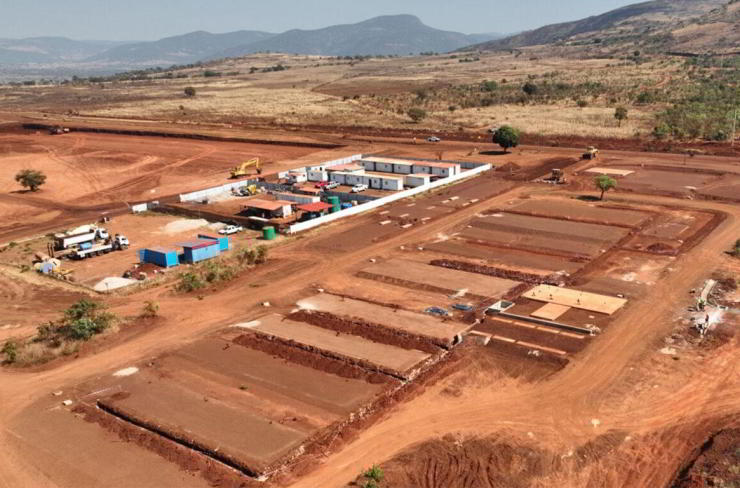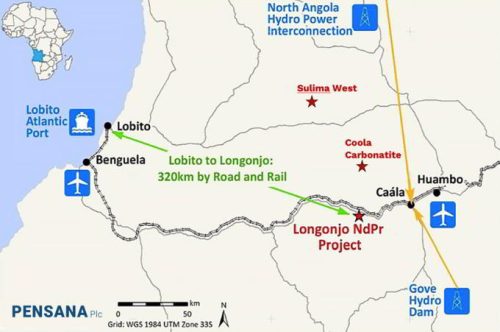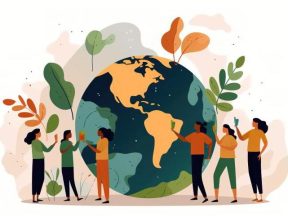Angola. Not only rich in oil but also in (rare) earths.

The Longonjo mine is attracting interest from foreign governments and companies, including the British ones. Meanwhile, the US is busy interfering with China’s control over the supply chain of critical minerals mined in DR Congo.
Three hundred and twenty kilometres. This is the distance by rail that separates the port of Lobito, the largest in Angola, from Longonjo, a town in the central-western province of Huambo. It is in this area that the country’s first rare earth mine will come into operation in 2025.
A goal on which the government of President João Lourenço is focusing heavily to diversify the Angolan economy, anchored to the exports of diamonds and oil.
According to estimates by the British company Pensana, responsible for the project entrusted in the field to its subsidiary Ozango Minerais, the Longonjo mine has reserves equal to 30 million tonnes of critical minerals, mainly containing neodymium and praseodymium.
The mixed rare earth carbonate (Mrec) obtained will be used for the production of permanent magnets used for the construction of electric vehicle engines and wind turbines.

The cargoes will travel along the Lobito railway line, which from the Angolan port extends inland for 1,600 kilometres reaching Kolwezi, in the Democratic Republic of Congo, and only 5 kilometres from the Longonjo site. It is on railway line that the precious minerals extracted in Congo, Zambia and Angola can reach the Atlantic outlet and from there the international markets.
“Work at Longonjo seems to be proceeding smoothly and the site is scheduled to be in operation by August 2025”, economist Dirk Kohnert, formerly deputy director of the German Giga Institute for African Affairs and author, explains to SouthWorld Magazine , in recent months, in an article entitled Prospects and challenges for the export of rare earths from Sub-Saharan Africa to the EU. “Thanks to the Lobito corridor, Angola could transform itself into an interesting new player in the sector in the next decade”, predicts Kohnert.
And this is where the interests of foreign players come into play. The concession that Pensana obtained in Longonjo from the Angolan government in 2020 is valid for 35 years.

The Longonjo mine has reserves equal to 30 million tonnes of critical minerals, mainly containing neodymium and praseodymium. 123rf
Together with the company, the Sovereign Fund of Angola is also investing in the mine (2.2 billion dollars). But it is London that dictates the timing of the project, which went from paper to the opening of the first construction site with the funds raised by the investment company M&G and those of the government program Automotive Transformation Fund.The Longonjo mine is just one part of a much larger plan designed by the British government.
At the end of 2023, with a loan of 415 million euros, disbursed through Export Finance, London entered the race to develop the Lobito corridor, a real challenge in this quadrant of southern Africa in which China, the United States and the European Union. But there is more.
The Canadian Ivanhoe Mines in November 2023 obtained exploration permits in an area of over 22 thousand km2 in the provinces of Moxico and Cuando Cubango, in the eastern part of the country.
A few months earlier, in August, the Minister of Economy and Industry of Japan, Nishimura Yasutoshi, had flown to Angola to sign a cooperation agreement between the two countries in the fields of trade and investment. At the moment, however, the United States seems to have the greatest grip on President Lourenço, and is interested in interfering with the control that China exercises over the supply chain.
Last November the Geological Institute of Angola and the United States Geological Survey signed an agreement under which the US government agency will support Angola in mapping its mineral resources. The country has 36 of 51 minerals classified as critical, including chromium, cobalt, graphite, lead, lithium and nickel. But only about 60% of these reserves have been explored to date. For Washington, grabbing even just part of these resources would mean gaining points over Beijing in the ongoing global energy transition process.

Lobito Port. CC BY-SA 2.0/Alan Jamieson
The Angolan government is, however, aware of the need to gradually distance itself from the exploitation of its two main resources: diamonds and oil. The country is the world’s second largest producer of diamonds which make up 5% of its exports, with 9.7 million gems produced in 2023. Also in 2023, Angola was the third largest crude oil producer in Africa, after Nigeria and Libya, as well as the largest offshore oil producer. Within the next five years, in addition to Longonjo, other rare earth mines should also be operational in the provinces of Uige, Cuanza-Norte and Huila. It is an ambitious path, but there is no shortage of obstacles. Starting with anti-personnel mines, a legacy of the civil war (1975-2002) and which remain scattered in various areas of the country. Other critical factors are represented by corruption (121st place out of 180 in the latest Transparency International Corruption Perception Index), the scarcity of water which complicates mining activities, and the dangerous conditions in which miners are forced to work, with deaths and cases of silicosis commonplace. If in the coming years the government does not get to grips with these structural limits by introducing stringent safety regulations in these workplaces, there is a real risk that the country will transform into yet another African mining state. (Open Photo: Longonjo Minesite. Photo Courtesy: Pensana)
Rocco Bellantone



